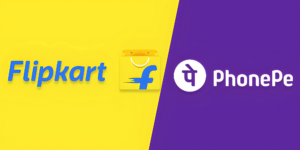Imagine this: summer is upon us and your family needs a new air conditioner to survive the grueling heat. Exciting news! There’s a seasonal sale at your preferred online store and you can get a great discount if you buy your AC today. Unfortunately, it is also the end of the month, and you’re out of funds to make the purchase.
Do you, then, miss out on the offer and wait till the next month to buy that much-needed appliance? No. You simply select the Buy Now, Pay Later option while checking out and bring home the new AC. The payment is then made next month after you receive that coveted ‘salary credited’ message.
Welcome to the new-age way of shopping online!
Consumer behaviour and spending patterns have changed numerous times over the years. In 2020, however, the transformation occurred at an unanticipated pace. With the spike in online transactions and rapid growth of ecommerce, there were massive shifts in the way consumers transact online. Central to this paradigm shift is the Buy Now, Pay Later payment option.
The evolution of payments amid COVID-19
The pandemic shook many industries from the ground up, but certain sectors saw multiple new opportunities in its wake. The digital payments ecosystem is one such industry that witnessed immense growth during this challenging period. In the initial 21-day lockdown alone, India witnessed 42 percent growth in digital payments.
Given the ubiquity of online payments and their role in ensuring social distancing, the share of online payments has only continued to grow.
In fact, an entirely new cohort, based in Tier 1, 2, and 3 regions of the country, has also embraced digital payment methods, further skyrocketing the sector’s reach and growth.
For the first time in India, these developments have opened up the possibility of access to formal credit beyond the first 100 million to the next 300-400 million Indians. In 2021, the need for social distancing still persists – and so does the inclination for innovative online payment methods.
The advent of Buy Now, Pay Later
After 2020, everything can now be bought on EMIs – consumables, durables or assets – with a click of a button.
This drastic culture change is being driven by a new generation geared towards instant gratification, buying into the commodification and consumerism aspect of our economy. As online transactions become more common, fintech companies operating in the lending space are introducing simple and seamless ways of making payments.
Buy Now, Pay Later is one such solution that allows customers to buy any product from ecommerce stores, and pay at a later date in a lump sum or by converting the amount into EMIs. This innovation has unlocked previously untapped opportunities for consumers, merchants, and fintech companies.
The idea behind Buy Now, Pay Later is that while the new generation of consumers enjoys credit instruments, they are dissuaded from using these due to tiresome approval processes of conventional lenders.
As an example, of the 900 million individuals who use banking services today, only a little more than 3 percent use credit cards.
Today’s consumers, especially those who fall in the millennial bracket, value fast-paced and seamless experiences more than anything. This generational shift in attitudes towards credit has been met with the perfect catalysts like digitisation, smartphone and internet penetration in semi-urban and rural areas, and cheaper data, fundamentally changing the lending landscape and improving access to credit.
This usage of this product is being further boosted by innovations like credit on UPI, by FlexPay, which has now made the Buy Now Pay Later option available at millions of brick-and-mortar stores that are accepting payment on UPI.
The Scan Now Pay Later product is going to enable a digital credit card experience for hundreds of millions of customers and millions of merchants who stayed outside the ambit of traditional credit cards.
Creating an aspirational financial product
More than just a credit instrument, Buy Now, Pay Later is an aspirational product that supplements the ongoing consumerism boom among the Indian middle class. It aims at providing a digital credit card experience to the 400 million Indians who have been outside the structured financial system.
As more young and tech-savvy consumers enter the fray, this approach to making payments will offer the perfect, frictionless payment solution to suit these urbanised individuals.
The need of the hour, now, is for fintech players to educate consumers across the country’s wide and diversified socio-economic landscape around the multidimensional benefits of Buy Now, Pay Later.
There is also a need to inculcate credit discipline and deploy appropriate recovery mechanisms to ensure that Buy Now, Pay Later continues to be one of the most convenient, easy, and mainstream payment methods in digitally-driven India.
(Disclaimer: The views and opinions expressed in this article are those of the author and do not necessarily reflect the views of YourStory.)










